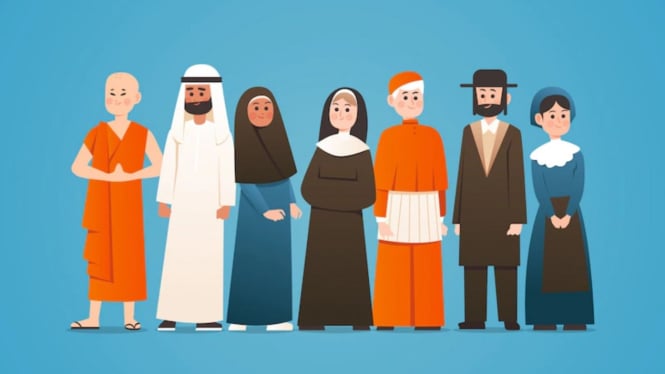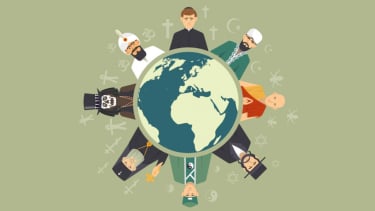A History of Religious Diversity in Indonesia
- Freepik: pikisuperstar
VIVA – Indonesia becomes one of the countries that have many diversities of religions. The religious diversity can be seen from the recognition of six religions embraced by the Indonesian people, namely, Islam, Christianity, Catholicism, Hinduism, Buddhism, and Confucianism.
Indonesia's religious diversity was created because of its long history. Long before the independence era, this red-white country was known for its abundant natural resources, especially spices.
This made traders from other nations, ranging from China, India, and Gujarat, to Europe want to come to Indonesia. Initially, they were looking for sources of spices to be used as production materials, although later colonization occurred because they wanted to control Indonesia's natural wealth.
Ilustrasi agama dan keberagaman
- Freepik: macrovector_official
In addition, there were also those who wanted to trade and make a profit. But apparently, these traders and immigrants also brought their culture to Indonesia, including religion.
Hinduism and Buddhism were brought by traders from India who had been trading in Indonesia for a long time. While Islam was brought by traders from Gujarat and Persia since the 13th century.
Christianity and Catholicism were brought by European immigrants and Confucianism by Chinese traders. These religions spread to the community until they were adopted. As a result, diversity was created in Indonesia.
In the era of independence, the nation’s founding fathers also recognized the existence of different beliefs in society. Moreover, they wanted this diversity to become the identity of the nation, so it was outlined in Pancasila, which is the foundation and ideology of Indonesia.
In fact, the state guarantees the carving of religion in the country through the 1945 Constitution of the Republic of Indonesia Article 29 which states 'The state guarantees the freedom of every resident to embrace their respective religions and to worship according to their religion and beliefs'.



























